Are New Plastic Containers Coated with Toxic Chemicals?
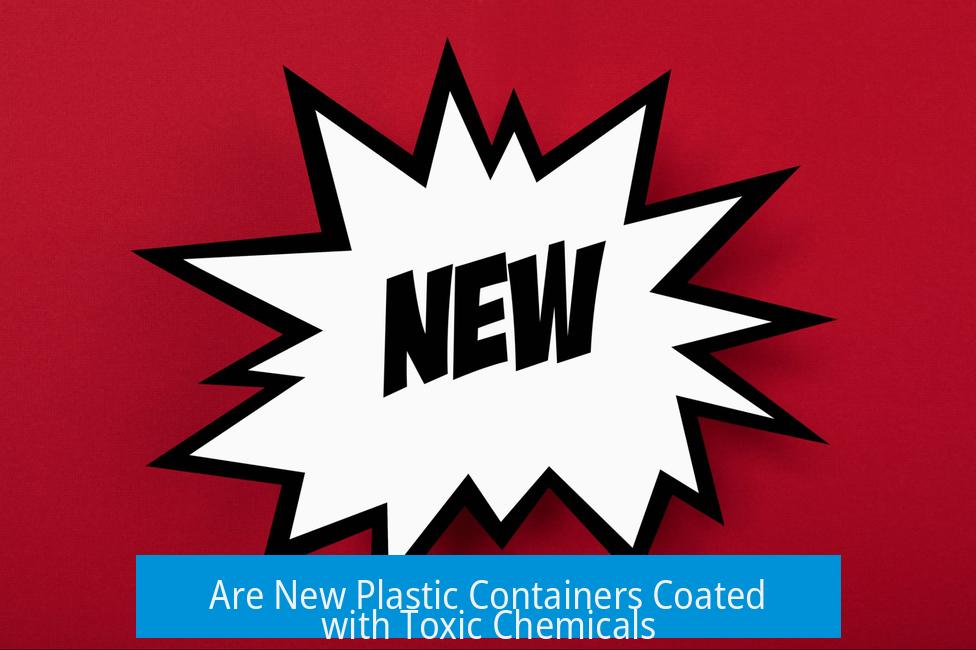
New plastic containers are not universally coated with toxic chemicals; however, many may contain or come into contact with certain chemicals during manufacture, transport, and use. Among these are per- and polyfluoroalkyl substances (PFAS), which recent studies suggest may be present in fluorinated plastic containers and could pose health risks through leaching into food and other contents.
1. Chemical Residues from Manufacturing and Handling
Plastic containers, especially those mass-produced for consumer use, often pass through various chemical treatments and coatings during manufacturing. Mould-release agents like vegetable oil, mineral oil, silicone oils, surfactants, talc, and chalk apply to mould surfaces to aid in shaping plastics.
- These compounds are generally not toxic in trace amounts and are mostly removed through normal washing.
- Residues may remain due to the high volume, continuous production with limited individual washing of units.
- Additional contamination might occur during storage and transport, exposing containers to antifungal and antibacterial biocides, drying agents such as silica gel, or other chemicals.
It is advisable to wash new containers before first use to reduce possible residues and external contamination.
2. Types of Chemicals Potentially Present on New Plastic Containers
Besides mould release agents, other chemicals may be present or migrate from plastics:
| Chemical Type | Description | Examples | Notes |
|---|---|---|---|
| Mould-release Compounds | Assist in plastic shaping; easy to remove | Vegetable oil, mineral oil, silicone oil, surfactants, talc, chalk | Handle by washing; minimal toxicity concern |
| Plasticisers and Related Chemicals | Add flexibility, plasticity; may include unreacted monomers | Bisphenol A (BPA), styrene (trace amounts), surfactants | Can produce chemical odors; BPA found mainly in PET plastics |
| Packaging and Transport Chemicals | Apply during storage to prevent degradation | Biocides, antifungals, drying agents | Trace amounts may remain after transport; potential for minimal exposure |
3. Presence of PFAS in Plastic Containers and Their Implications
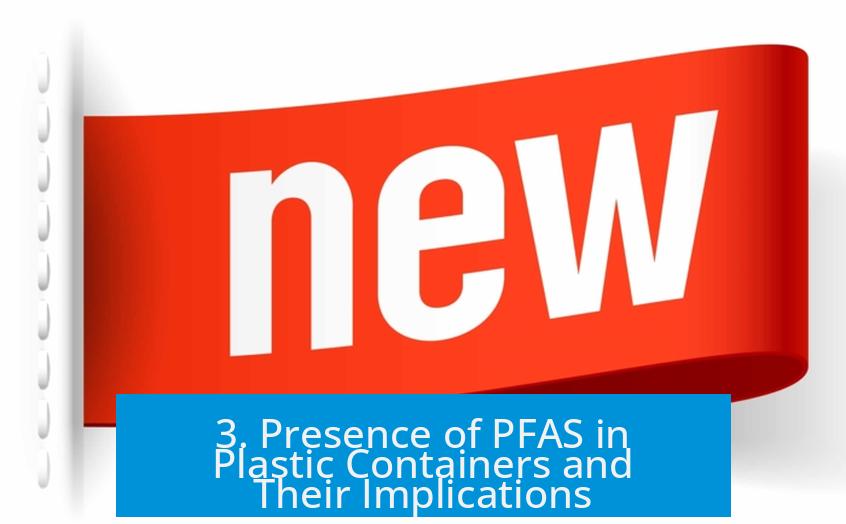
Recent studies, such as one published in Environmental Science and Technology Letters, show that fluorinated high-density polyethylene (HDPE) containers used for household cleaners, pesticides, personal care products, and potentially food packaging may contain PFAS—a class of fluorine-based chemicals notorious as “forever chemicals.”
- PFAS compounds are applied to impart oil and water resistance.
- They persist in the environment and do not biodegrade.
- Detected in container materials at parts-per-billion levels.
- PFAS can migrate from the container surfaces into food or solvents during storage within a week.
The Harvard-based research group highlighted at least 68 different PFAS present globally in food packaging, 61 of which are banned in certain applications but still present.
4. Health Risks Linked to Chemical Migration from Plastic Containers
Evidence indicates that the migration of PFAS and other chemicals from plastic containers into food or liquids may pose health risks, especially with repeated exposure over time.
- PFAS exposure associates with prostate, kidney, and testicular cancers, low birth weight, thyroid issues, and immune system effects.
- A study observed PFAS concentrations exceeding the Environmental Protection Agency (EPA) 2022 Health Advisory Limits.
- Although a single, brief contact with residues or chemicals on a new container is unlikely to cause harm, repeated or long-term exposure could increase health risks.
In addition, chemicals such as bisphenol A (BPA), unreacted styrene, and plasticisers may leach in trace amounts. These often cause odors or subtle chemical tastes but have less clear quantifiable toxicity through incidental exposure.
Given the complex chemical profiles of various plastics, not all compounds are well studied or quantified for toxicity. Users should adopt cautious, preventive approaches when handling new plastics.
5. Washing New Plastic Containers to Minimize Risks
Washing new containers is strongly recommended to remove chemical residues from manufacture, packaging, and transport.
- Laboratory cleaning during manufacturing is not perfect due to the scale of production.
- Simple hand-washing with mild detergent effectively removes mould-release agents and surface residues.
- Washing does not eliminate embedded chemicals such as PFAS but can reduce incidental external contamination.
Additionally, washing is a prudent practice for items beyond plastics, including newly purchased clothes or kitchen utensils, due to unknown environmental exposure before purchase.
6. Environmental Concerns and Regulatory Responses
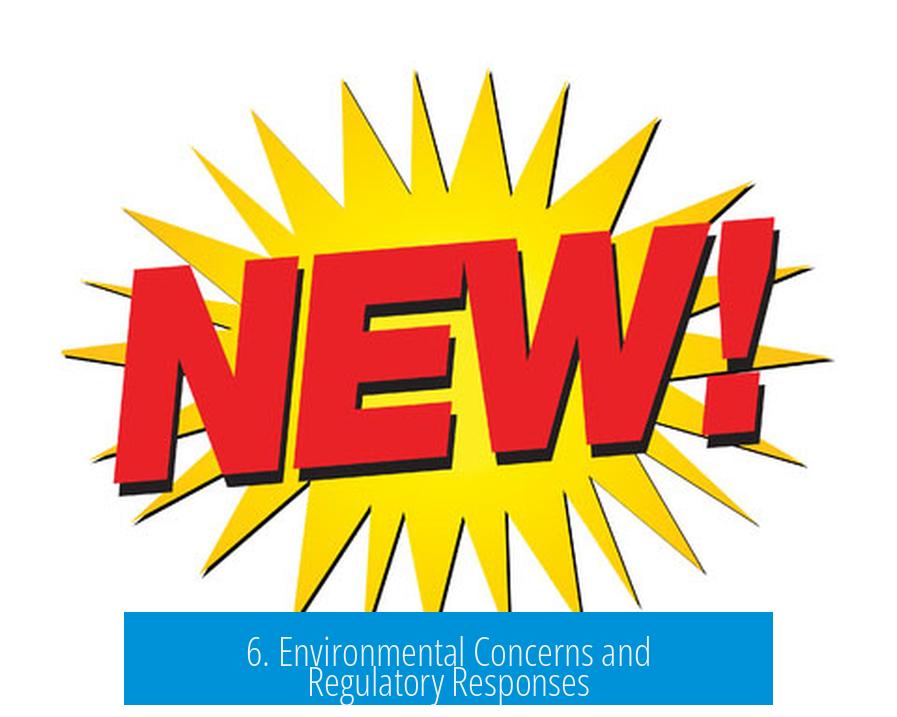
PFAS, famously persistent and bioaccumulative, present ongoing environmental challenges. They contaminate groundwater, soil, and biological systems worldwide.
The EPA’s PFAS Strategic Roadmap, announced in 2021, focuses on:
- Understanding and regulating health and environmental effects of PFAS exposure.
- Preventing further air, land, and water contamination.
- Remediation efforts for existing PFAS pollution.
Despite these initiatives, PFAS contamination remains a significant concern due to the extensive use and persistence of these substances.
7. Personal Choices Regarding Plastic Containers
Some consumers choose alternatives such as glass or metal containers to avoid plastic-associated chemical exposures altogether.
Glass containers do not leach chemicals and do not require careful washing beyond standard cleaning, making them preferred for sensitive uses like food and beverages.
Nevertheless, plastic containers offer convenience, light weight, and impact resistance, which keep them common despite potential risks.
Key Takeaways
- New plastic containers may contain trace chemical residues from manufacture, such as mould-release agents and plasticisers.
- Recent findings reveal fluorinated HDPE containers often contain PFAS, which can migrate into food and beverages.
- PFAS are persistent environmental pollutants linked to cancers, immune system, and thyroid effects.
- Single exposures to residual chemicals on new containers present minimal risk; repeated exposure increases risk.
- Washing new plastic containers reduces surface chemical residues but does not remove embedded PFAS.
- EPA and other agencies are actively working on understanding and regulating harmful plastic-associated chemicals.
- Alternatives like glass can avoid plastic chemical exposure but trade off convenience and durability.
Are New Plastic Containers Coated with Toxic Chemicals?

Short answer: Yes, some new plastic containers can be coated or contaminated with toxic chemicals such as PFAS, but the toxicity risk generally depends on exposure frequency and the specific compounds involved. Let’s unpack this messy mystery of plastics, chemicals, and health concerns.
You probably grab a plastic container, toss your leftovers in it, and never think twice about what invisible stuff might be lurking on or inside. But new research shines a bright (if somewhat alarming) spotlight on these everyday objects. So, should you be worried? Let’s get into the nitty-gritty details.
Washing Matters: First Step to Safety
Whether a household cleaner bottle or a food container, industrially made plastics usually come off the assembly line fast and furiously—thousands per hour—with barely a moment for tender loving care. That means final washing to remove chemical residues isn’t perfect. Manufacturers do their best, but residue from mold-release compounds or transport chemicals might still cling.
Pro tip: Washing new plastic containers before use is a simple, effective way to cut down any leftover traces. This is often recommended on the packaging and is a smart precaution since you don’t know every twist and turn the container has been through before you snagged it.
Ever considered giving a new shirt or pair of jeans a good wash too? Same concept. It’s all about minimizing unnecessary exposure.
The Usual Chemical Suspects on Plastics
What kind of chemicals can stick to new plastic containers? The list includes:
- Mould-release Compounds: These are sprayed on molds to keep the plastic from sticking. Examples include cheap vegetable oils, mineral oil, silicone oil, household detergent-like surfactants, talc, and chalk. Thankfully, these ingredients are mostly benign and wash off easily with soap and water.
- Plasticisers and Related Chemicals: Think bisphenol A (BPA) in PET plastics, plasticizers, unreacted monomers, and tiny polymers. Some unreacted substances like styrene act like biocides during transport, evaporating quickly once exposed to air but can give that telltale chemical smell when you open a box or toy packaging.
- Packaging and Transport Chemicals: These might include antibacterial agents, fungicides, biocides, and drying agents like silica gel. If your container’s been lounging in a warehouse for ages, tiny residues might still hang around.
What About Those Forever Chemicals — PFAS?

Here’s where the concern amps up. PFAS, or per- and polyfluoroalkyl substances, are notorious “forever chemicals.” They resist breaking down both in nature and your body, which spells trouble. Recent studies, including one from Environmental Science & Technology Letters and work by the University of Notre Dame researchers, reveal that fluorinated HDPE containers (a common plastic type used for cleaners, pesticides, personal care, and sometimes even food packaging) can contain measurable levels of PFAS.
Why does this matter? PFAS can migrate—or leach—from plastic containers into the food or liquids stored inside. Research shows these chemicals can move into solvents and foodstuffs in as little as a week. That’s fast!
And the health stakes? These harmful substances link to serious issues like prostate, kidney, and testicular cancers, low birth weight, immune system problems, and thyroid diseases. The Environmental Protection Agency (EPA) has set health advisory limits due to these risks, and the levels found in some containers exceed those limits.
Is Single Exposure Dangerous? What About Repeated Use?
If you only use a new plastic container once or twice, the risk of toxicity is low. One exposure isn’t like a villain in the night. But if you stash food or drinks daily in containers that gradually release trace chemicals? The story changes.
Repeated or long-term exposure to these chemicals could pose health risks. It’s a bit like sunburn; a brief exposure may not cause damage, but long sessions under an intense sun will. The exact hazards depend on the amount and duration, which science is still unraveling.
Are Lawsuits Flying Left and Right?
Some comfort comes from legal trends. The fact that there aren’t flurries of successful lawsuits targeting plastic chemical residues implies that for most people, immediate health damage is minimal or uncertain. The tricky bit is toxic exposures might build up over years, making direct proof of harm hard.
What’s the EPA Doing About All This?
In 2021, the EPA rolled out its PFAS Strategic Roadmap. The plan aims to better understand the health and environmental impacts of PFAS, stop further contamination, and manage cleanup efforts. So, regulatory eyes are on the issue — which means more controls and hopefully safer products in the future.
Are All Plastics Created Equal?
Not all plastics are equally suspect. Some plastic types, like PET, are more closely linked to chemical leaching issues, while others might be relatively safer. Plus, food packaging from all over the globe contains a dreadful variety of “forever chemicals”—68 different PFAS, with 61 banned from food contact in many countries but still turning up.
It’s a regulatory patchwork. Your safest bet when storing food is to opt for hard glass containers if you want to avoid chemical exposure altogether.
Personal Choices: Glass vs. Plastic
Some people simply refuse to drink from or store food in plastics. Glass is inert, doesn’t leach chemicals, and you can microwave it without stressing out. Plastic containers do offer convenience and low cost, but if health is a priority, investing in glass or stainless steel is wise.
Simple Tips to Reduce Risk
- Wash everything new. Don’t just assume factory washing was enough.
- Limit reuse of plastic containers for food storage. Switch to glass for leftovers or meal prep.
- Avoid microwaving food in plastic. Heat speeds chemical leaching.
- Check for “BPA-free” labels and prefer plastics known for safety. That’s low-density polyethylene (LDPE) or polypropylene (PP).
- Reduce overall plastic use. Using fewer plastics means less exposure to potential chemicals over time.
Summing It Up
Are new plastic containers coated with toxic chemicals? Sometimes yes. New plastics can carry residues from mold release oils, plasticizers, and transport chemicals. More worryingly, many fluorinated HDPE containers contain PFAS, toxic forever chemicals that can migrate into your food.
However, the risk from a single container use is small for most people if you wash the container before use. More concerning is repeated exposure over time, which scientists and regulators are still studying—and acting to limit. Meanwhile, personal choices like switching to glass containers or washing plastics thoroughly remain practical defenses.
So, next time you unpack a new plastic container, a quick wash is your easiest guard. For your own peace of mind, glass might just be the MVP in avoiding these invisible chemical stowaways entirely.
“Knowing is half the battle—and washing your plastic is the other half.”
Q1: Are new plastic containers coated with toxic chemicals?
New plastic containers are not intentionally coated with toxic chemicals. However, traces of manufacturing residues or chemicals from transport can remain on their surfaces.
Q2: What types of chemicals might be found on new plastic containers?
They may carry mould-release compounds like mineral oil, plasticisers including bisphenol A, or residues from packaging such as anti-bacterials and drying agents. Most wash off easily.
Q3: Do plastic containers contain PFAS, and why does it matter?
Some fluorinated plastic containers, especially HDPE types for cleaners and pesticides, may contain PFAS, harmful “forever chemicals” that can leach into food and pose health risks.
Q4: Can chemicals from new plastic containers leach into food?
Yes, some chemicals, including PFAS, can migrate into food stored in plastic containers, sometimes within a week, raising concerns about long-term exposure.
Q5: Is a single use of new plastic containers a health risk?
One-time exposure is unlikely to cause harm. Repeated or prolonged exposure to chemical residues or PFAS may pose health risks, though exact limits vary.
Q6: How can I reduce potential chemical exposure from new plastic containers?
Wash all new containers before use. Consider using alternatives like glass to avoid chemical residues and possible contamination from plastics.


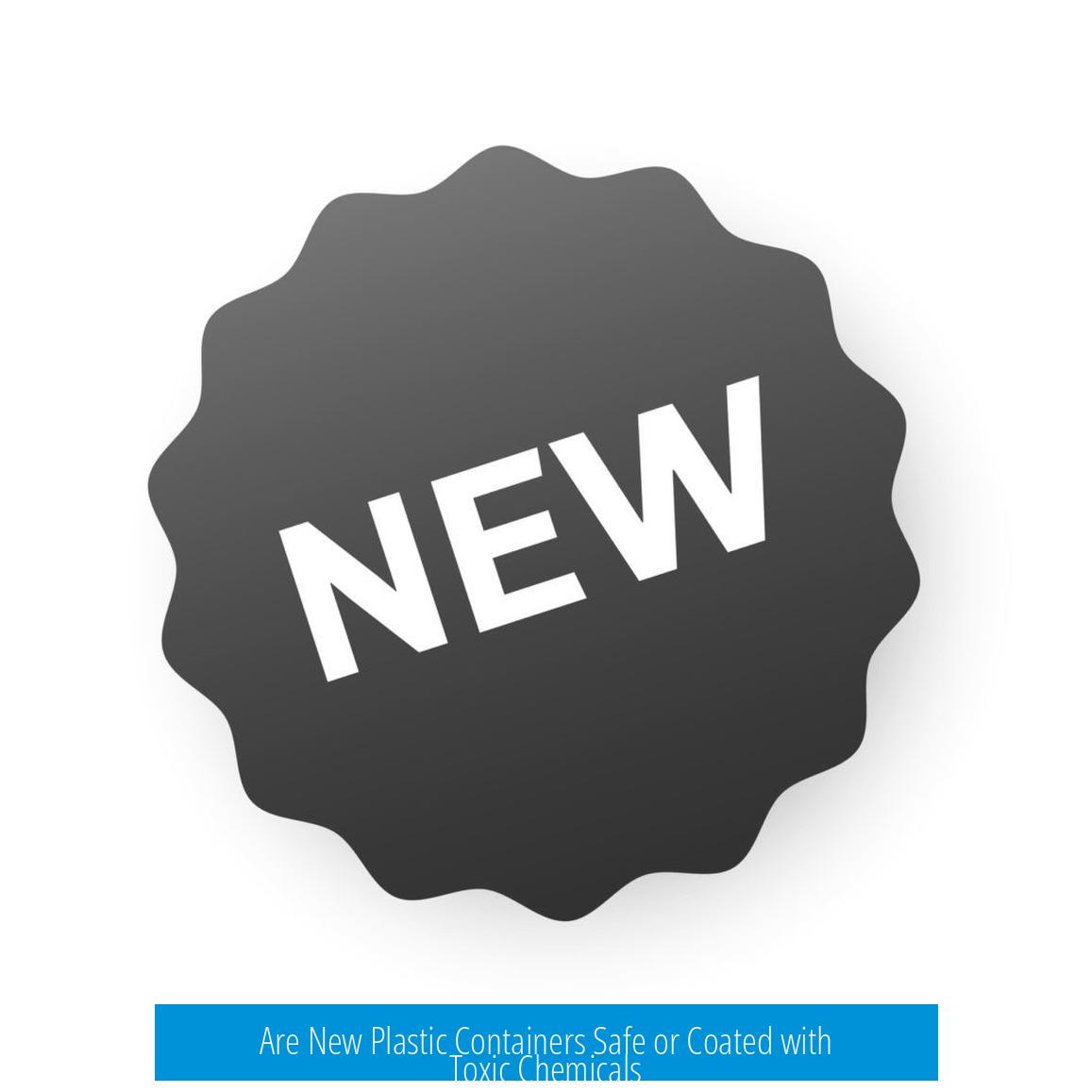

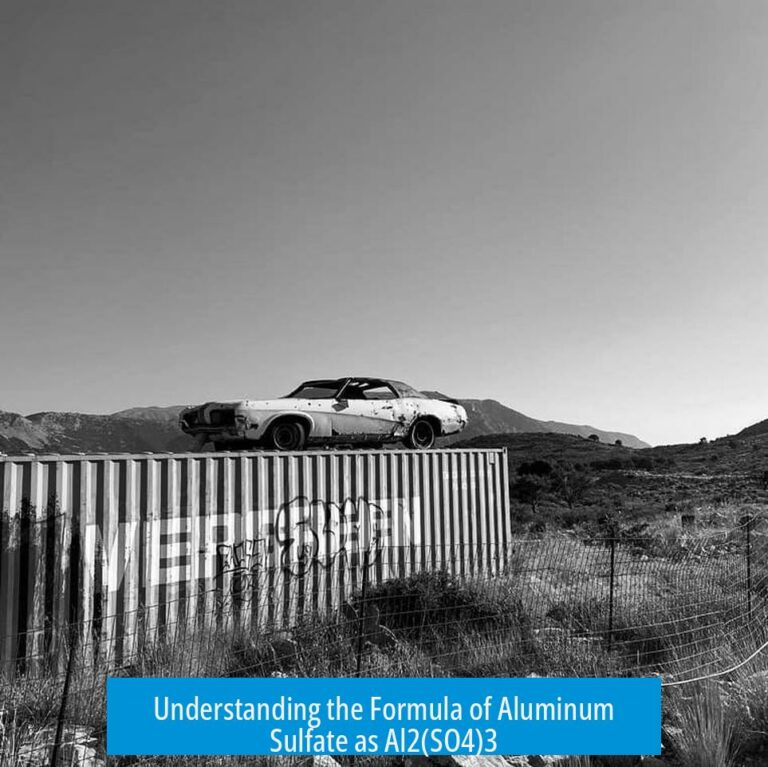
Leave a Comment